Tuesday, 22 December 2009, I hired Mr Jagbinder Singh and his car to go to the Gurpa mountains where Mahaakassapa is reported to have attained Parinibbana. According to Mahayana tradition, Mahaakassapa did not die but remains alive in a deep meditation state inside the mountain, waiting for the enlightenment of the next Sammaasambuddha – Metteyya (known as Maitreya in Hindu and Mahayana traditions). According to this story, Mahaakassapa will pass a robe once belonging to Gotama Buddha to Metteyya Buddha.
For my part, I am Theravada Buddhist and don’t know much about the Mahayana tradition of Bodhisatta (Bodhisattva in Sanskrit). I believe that Mahaakassapa and other ancient arahats spent a lot of time meditating in these hills and probably died there. There is no citation in the Paali Canon to say where Mahaakassapa passed parinibbana. After Lord Buddha Gotama’s parinibbana, Mahaakassapa was accepted by most of the Sangha (community of monks) as the leader, though he did not covet such status since he had long attained full enlightenment as an Arahat. Interested readers may like to read short biographies of Mahaakassapa at Palikanon.com, Access to Insight (by Helmuth Hecker) and the book Great Disciples of the Buddha by Nyanaponika Thera.
Mr Jagbinder drove us north from Bodhgaya, through Gaya until we turned right (eastwards) at a turn-off (hard to describe the location) about 5-10 km north of Gaya. The road was very rough, and narrow for about 20 km so we had to travel slowly paying attention to avoid countless pot holes and many other people and animals on the road. It turns out we would have been better off going further north before turning east and taking a slightly longer route (may be an additional 5-10 km) on a better mostly sealed road. We took this route on the return journey.
We eventually reached Fatehpur, a small village and then drove further on rough, dusty roads to Gurpa village. On reaching the village we had to wait 10 minutes at a railway crossing. It seems possible to take a train from Gaya to Gurpa village, though it may be 3rd class. It may not be too bad since it would be a relatively short journey – maybe less than one hour travel by train. It took us about 2 hours by car to reach Gurpa village from Bodhgaya. We may have travelled faster if we were in Tata Sumo or other 4-wheel drive vehicle or on motorcycles. Mr Jagbinder told me that many passenger and freight trains pass here going between Kolkata and Delhi and various destinations in between.
After crossing the rail lines, we proceed a short distance through the village until the road ended near a large tree and a stream. The tall dark profile of Kukkutagiri was southwards beyond the tree. The tallest hills in this area including Kukkutagiri are about 300m high.
ABOVE: View of the profile of Kukkutagiri looking southwards from the edge of Gurpa village, Bihar, India. The peak on the left (east side) shows the Metteyya stupa at the summit.
Mr Jagbinder negotiated with 3 boys to guide me up the hill for 100 rupees. It did not seem necessary to me as I was confident of finding my own way up the hill. However, Mr Jagbinder said it would be good to have companions on the walk since this was still a somewhat dangerous area. It was previously prone to bandits/Naxalite activities and Mr Jagbinder thought it would be prudent to have companions who could talk with anyone we met on the way up the hill. He briefed the boys as to who I was and what I was doing (a Buddhist pilgrim from Australia going to pay respect to the shrines of Mahakassapa and Metteyya Buddha).
ABOVE: View of scrub between Gurpa village and Kukkutagiri looking north east
We walked through rough scrub and passed goats, cattle and local people who seemed to be gathering sticks from the scrub. The men all carried or were using long sticks with small axe heads to chop the short trees among the scrub. After about 1 km walking along narrow paths, we reached the foot of the hill and the concrete steps leading up the hill. A local man who spoke a little English and armed with one of those stick/axe tool/weapon greet us and insisted on being “security” for the walk up the hill. I didn’t argue with him or negotiate a price. He spoke aggressively with the boys in Hindi and then we commenced the climb. It was very steep and hard work. I wore a white t-shirt and nylon trousers and my walking shoes. I also wore a hat and carried one litre of water in my day-pack.
ABOVE: View of a short section of rough path on Kukkutagiri (most of the path is concrete steps)
ABOVE: View of a section of concrete path on Kukkutagiri
ABOVE: View of a section of concrete path on Kukkutagiri
ABOVE: View of a section of concrete path on Kukkutagiri. The end of this path will turn left (north) into a very narrow crack in the rocks
We stopped several times on the climb to rest and I took photos. The scenery was beautiful though haze would not allow me to see the horizon. The man walked in front of me and smelled of tobacco etc. The boys were sometimes in front and sometimes behind – always talking loudly with each other and with the man. It would have been better were I alone to contemplate the significance of this sacred place, even so, I was grateful to be there and was happy nonetheless.
ABOVE: Some of the images painted on the concrete path on Kukkutagiri
The concrete steps seemed to be newly constructed. Someone had painted a white stripe in the centre of the steps leading the way upwards or downwards. I saw crudely painted figures of human and cross shapes here and there – not knowing the significance of them. There was also some Chinese characters carved on a rock about one third of the way up. I recognised the largest character as Fó (佛)- the character for Buddha.
We reached a point where we turned left (eastwards) and walked a short distance up some more concrete steps to the entry of a very narrow passage through the rocks (northwards). We rested a little and then continued the climb. I had to turn my body slightly side ways to walk without scraping the sides too much. It became darker and then we had to turn left (westwards) in almost pitch dark. I turned on my phone flash light but this was relatively dim. The path then turned right (northwards) and I had to stoop to avoid bumping my head. My day pack scraped the rocks above as I walked though to day light again. Now we were on a large ledge facing northwards and westwards. I enjoyed the view and took some photos of Gurpa village and the nearby lower and west side peak covered in large boulders and small trees/scrub. I looked down the slope and could see a lot of rubbish strewn about on a ledge about 3m below. I could read “Lotus Nikko Hotel” on some of the packages.Perhaps a tour group had brought a packed lunch from their hotel. I would hope that the hotel staff or tour guides who brought the group up the hill would collect the rubbish and return it to the hotel.
ABOVE: Some of the rubbish from “Lotus Nikko Hotel” littering the sacred mountain of Kukkutagiri
Prompted by my four guides, I turned southwards and stoop-walked between some large boulders down to a gold and white painted construction about 3m square and maybe 6m tall. There was another veranda facing south-east with a newly constructed tank (see photo of adjacent summit below for a view) which was empty of water but contained a few leaves and other rubbish.
I turned south again and saw a life size statue of Mahaakassapa inside a locked glass enclosure shaped like a chedi. I removed my shoes and paid respects to the image, recollecting as best I could, the virtues of Mahaakassapa and the sacred nature of this place, reputedly one of the caves he lived in and meditated in so long ago. It is also possible Lord Buddha and other arahats also spent time in this cave and at other locations nearby. I was being closely watched by my guides. It would have been better to be alone or with some sincere Buddhist meditators…
ABOVE: The Mahaakassapa shrine located in a somewhat sheltered area near the summit of Kukkutagiri
While paying respect to the Mahaakassapa shrine, 2 more local boys arrived and claimed to be caretakers of the site. Now I had 6 guides.
After taking photos I was led back northwards between the boulders and then we turned right (eastwards) and up a few more steps to a temple and stupa on the peak of the mountain. It would have been good to have seen this site in its natural state before any human construction. I imagine that Mahaakassapa and other monks would have sometimes sat on the boulders at the peak.
ABOVE: The three room temple and stupa on the summit of Kukkutagiri
The crudely built temple comprised three small rooms with curtains covering the doorways. I was invited to look in the left-most room and saw some carved foot prints which were apparently supposed to be of Lord Buddha. I estimate the length of the foot prints were about 40-45cm. Someone had dropped red paint on them which I believe may be a Hindu practice. Ven. Dhammika in Middle Land, Middle Way, wrote that locals believe these prints to belong to a Goddess of the mountain. Even so, there was a small Buddha statue in the room. I didn’t inspect the other rooms.
ABOVE: The Metteyya stupa on the summit of Kukkutagiri looking southwards
I then circumnambulated the Metteyya stupa and took some more photos. There is no reference to Metteyya in the Paali Canon, only in post-canonical literature and in non-Theravada traditions such as Mahayana. However, the Paali Canon does refer to seven previous Sammaasambuddha beings and many Paccekkhabuddha beings in the past, so I believe that many more of both types of Buddha will arise in the future when the current Buddha’s dispensation has disappeared from recorded history and knowledge. Whether the next Sammaasambuddha will be named Metteyya or not, I don’t know. It isn’t that important to me because Gotama Buddha – our historical Buddha gave us more than enough teachings to make progress in the Dhamma and to attain Nibbana. We are fortunate enough to be born in the dispensation of Gotama Buddha so we may hear, study and practice the Dhamma at this time. We don’t need to imagine some possible future time of Metteyya Buddha for our possible salvation, it can happen right now. Be in the present moment.
ABOVE: A view of one of the four Buddha images on the side of the Metteyya stupa at the summit of Kukkutagiri looking eastwards
ABOVE: The commemoration plaque for the Metteyya stupa on the summit of Kukkutagiri looking southwards
You may learn more about the 17th Gyalwa Karmapa Urgen Trinley Dorje on his website.
There is also a short text article and an online video of the stupa consecration mentioned above. I personally don’t follow him and never heard of him until I read that sign on Gurpa Mountain.
Here is another interesting article about the consecration including some photos of the the steps, Mahakassapa chedi, the Metteyya Stupa and the pilgrims attending on the day etc.
Mr Jagbinder later told me that on the day of the consecration, around 80 Tata Sumo vehicles drove from Bodhgaya to the site. The two brothers who came later while I was paying respect to the Mahaakassapa shrine told me that since the consecration other pilgrims had visited the site in smaller groups mostly from Japan and Taiwan.
ABOVE: The view looking westwards from the balcony next to the Metteyya stupa on the summit of Kukkutagiri. The adjacent summit seems to invite further exploration. This photo also shows the small tank on the balcony of the Mahaakassapa shelter.
It had taken one hour to reach the summit of Kukkutagiri. I spent about 20 minutes there and it took about 30 minutes to return to the car and Mr Jagbinder. He had stayed behind to guard his car.
I paid the man 100 rupees, the two brothers 100 rupees to share and the 3 boys 100 rupees to share. Just as we were about to drive away, two more men came and claimed to be the official caretakers, demanding that we register our names in a book and pay a fee. I asked for official identification which was not forthcoming and also asked why they weren’t doing their jobs taking care of the site. Mr Jagbinder also spoke in Hindi and they calmed down. We drove off and were delayed again at the railway crossing for about 20 minutes as several trains passed about 5 minutes apart. We fixed a car tyre puncture while waiting.
I got back to the Deep Guest house around 2:30 PM, took a shower and ate some lunch. I was quite hungry since I had not eaten breakfast or lunch, not even a cup of tea. Breakfast at the Deep starts at 8:00 AM and Mr Jagbinder had picked me up at 7:40 AM. I then rested in my room reading an English novel version of the Mahabharata by Meera Uberoi.
Inspiration
It was tough work climbing the Kukkutagiri, Ratana Hill (Gijjhakuta), Isigilli (Sona Hill) and Giryek Mountain (Indasala cave), Vaibhara Hill (Satapana Cave), Brahmayoni (Gayasisa) and so on… There are many hundreds of kilometres between the various places that Lord Buddha and the Sangha of old walked to and from. Having personally climbed these hills I can testify that without modern paths or their equivalent it would be very difficult to access these remote locations. In the ancient times the dense forests had not been cleared and there were many wild animals roaming around. Now the forests have been mostly cleared and the animals we see are domesticated goats and cows.
While walking around these places I frequently wondered in amazement at the strength and fitness of the ancient Sangha. They would have to climb up and down on a daily basis to get their alms food for the day. Just reading the suttas in books or listening to audio does not convey the meaning that one experiences at these locations. It is amazing, really amazing.
Then I considered that Lord Buddha and others in the ancient Sangha were still walking around and climbing tall hills in jungles and forests while aged in their 70s and above. In some accounts Mahaakassapa and other arahats were 120 years old or more and still living under trees and in caves located in remote places such as Kukkutagiri rather than in relatively comfortable monastery buildings located close to faithful lay people who would provide abundant alms.
Then I considered that many of the ancient Sanga were expert meditators, able to use supernormal powers to fly and remove physical obstacles in their paths. Perhaps sometimes they would fly to the summit of the hills and fly over the dense jungles where no walking paths were apparent. So amazing…

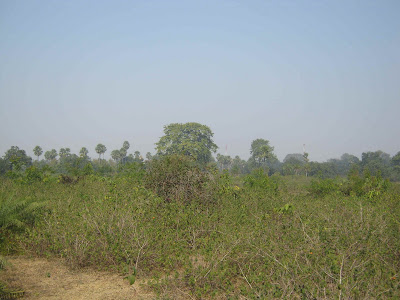
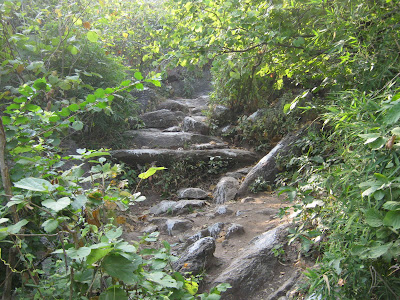


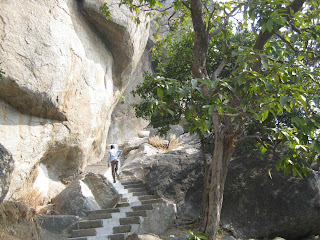
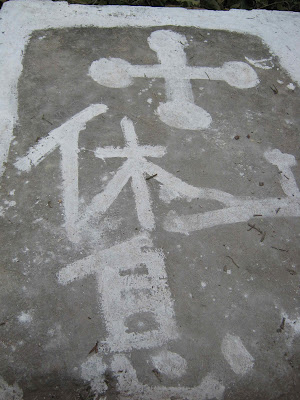
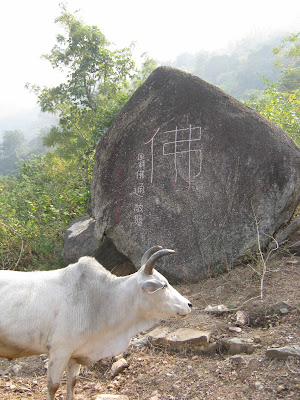
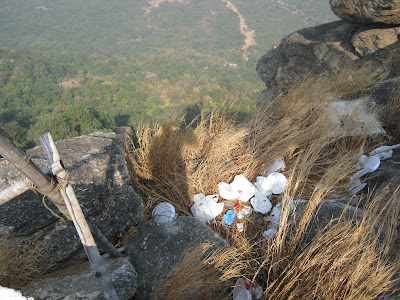

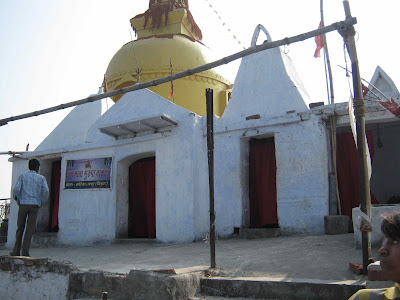
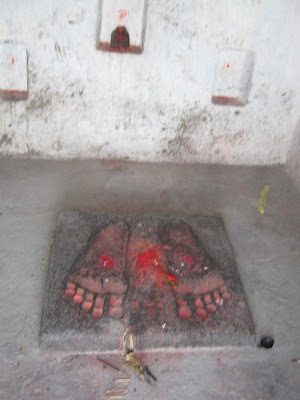
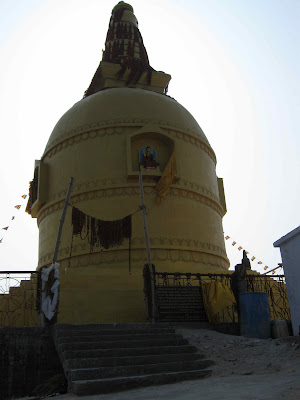


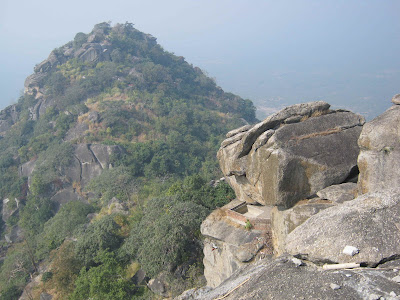
Leave a Reply
You must be logged in to post a comment.